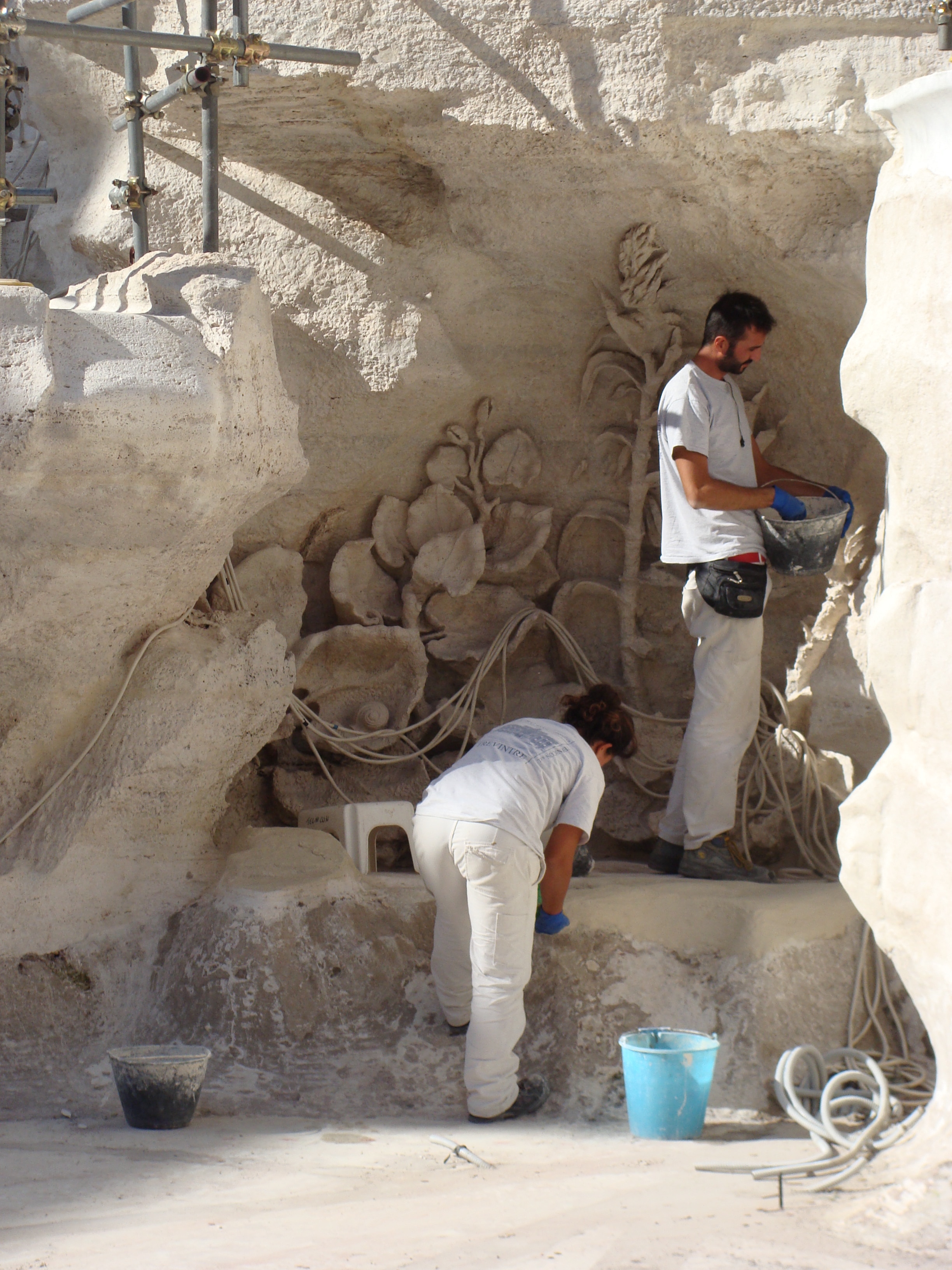The Trevi Fountain
The treatment of 2014-15 came twenty-five years after the earlier restoration of the Trevi Fountain in 1989-90, also by CBC. It was a golden opportunity to follow up and critically examine how well the earlier intervention – quite experimental for the time – had held up over quarter of a century
In the earlier treatment, we worked in collaboration with Archires Srl, with funding from a sponsorship by Assitalia. Drawing on our memories, and the documentation we made at the time, it was very interesting to compare the condition of the fountain in 2014 with what we had found in 1989
before we started work: it was clearly in a much better state, fortunately. However, the microclimate – a consequence of the water and aerosol from the fountain – continues to create ideal conditions for microbiological and biological attacks, particularly on the sculptured rocks. Despite a pre-existing water recirculation system and the reverse osmosis treatment introduced in 1991, the high levels of calcium in the Roman water supply had led to thick new deposits of limestone in all areas affected by direct contact with flowing, resting or sprayed water. However, there were no deposits due to water infiltration, showing that the fills used in 1989 to seal the joins between the travertine blocks were still holding well.
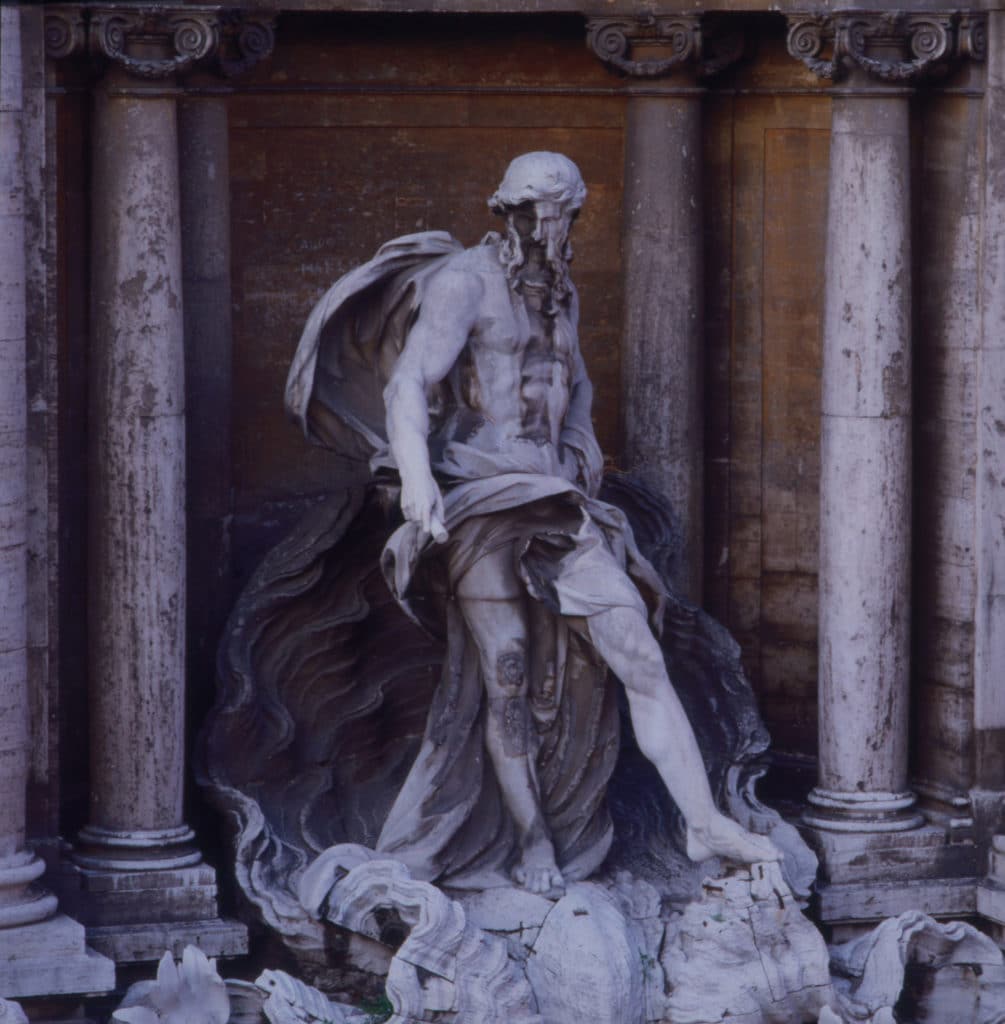 1989
Sculpture of Oceanus before restoration
1989
Sculpture of Oceanus before restoration
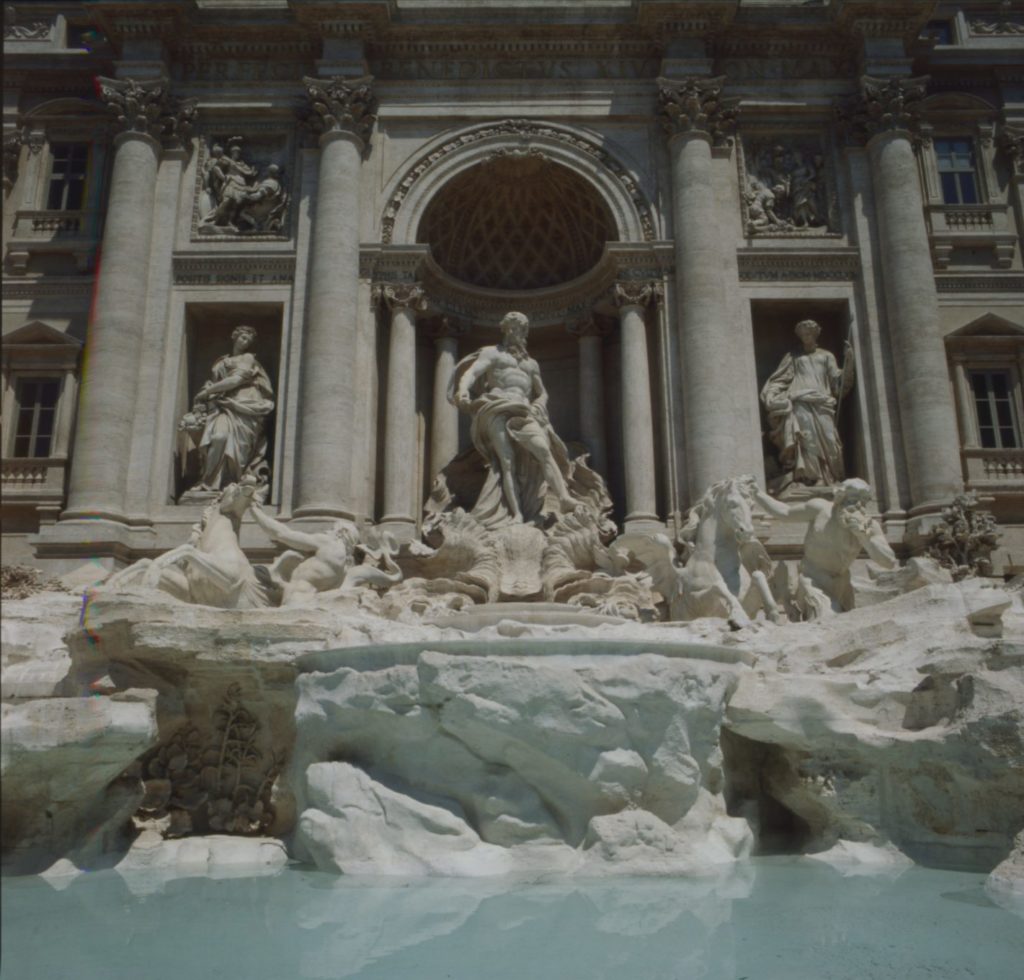 1990
The front of the Trevi Fountain at the end of the treatment
1990
The front of the Trevi Fountain at the end of the treatment
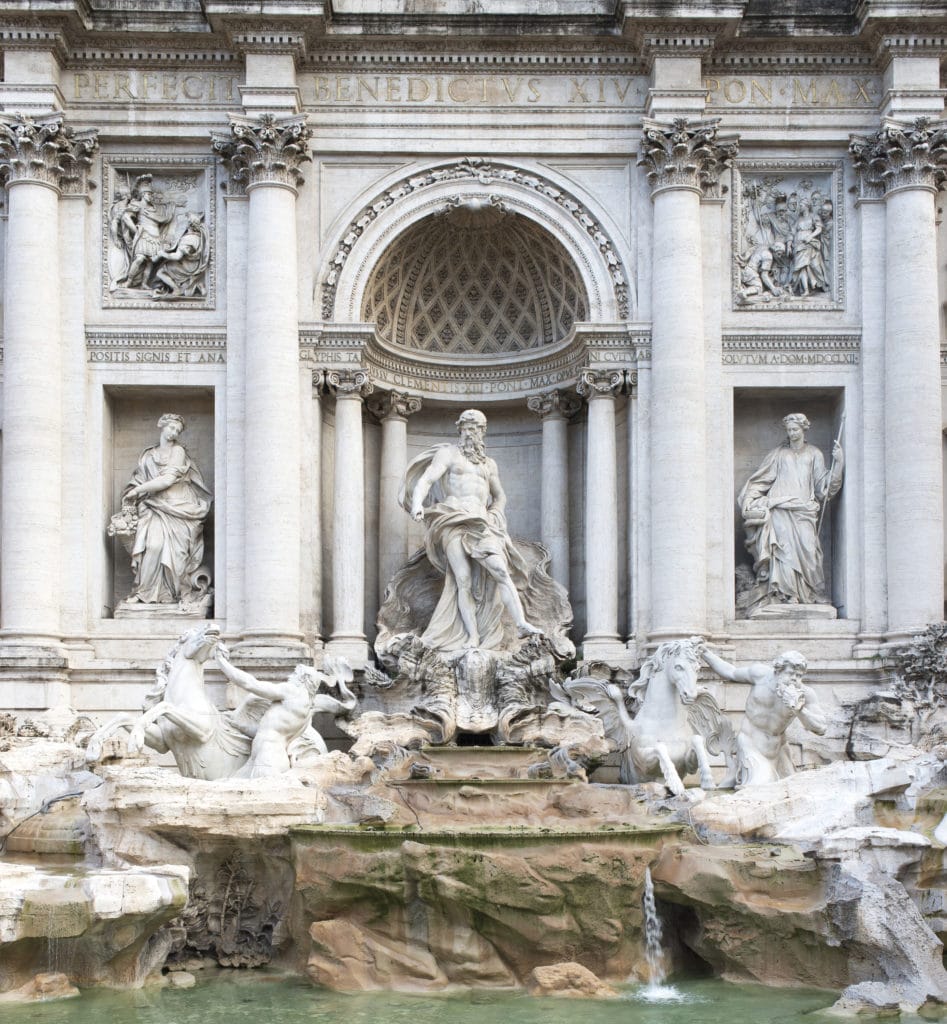
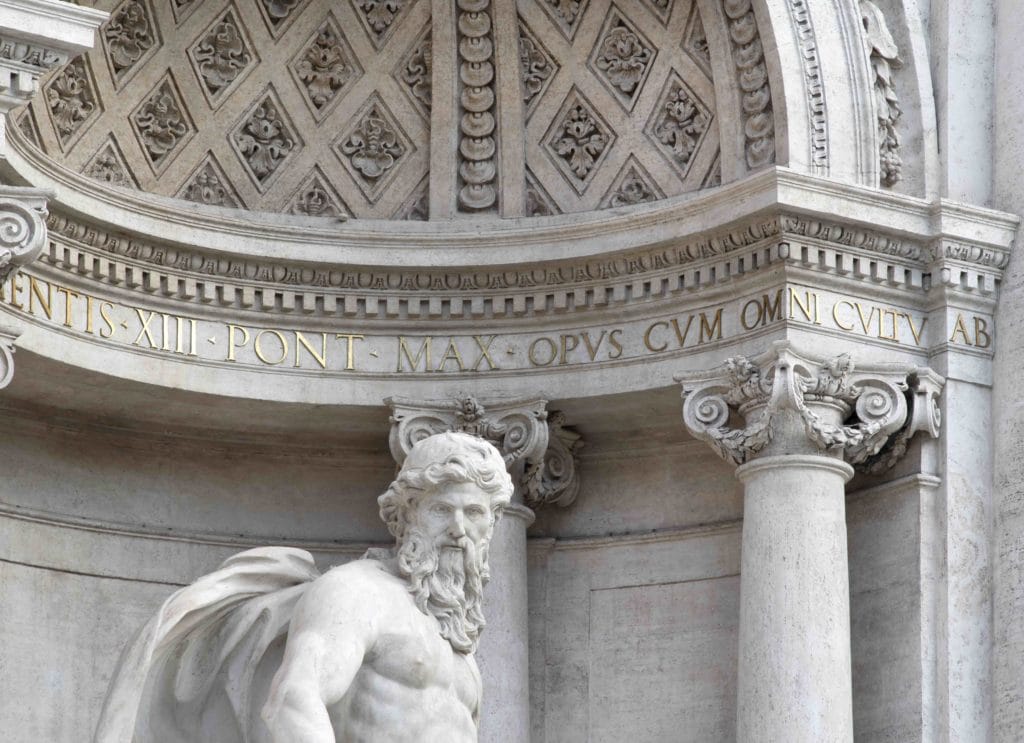 2014 -2015
The middle of the Fountain before and after treatment
2014 -2015
The middle of the Fountain before and after treatment
The present treatment of the stone surfaces repeated all the phases of gradual cleaning used in the earlier treatment, starting with dusting and biocide treatment, followed by cleaning with brush and water and localized chemical cleaning. The amount of limestone deposit to remove mechanically was almost at the same level as 1989, but now we had more effective equipment. Inspecting the fills used in 1990 to seal joints and fractures gave us particular satisfaction: they were in excellent condition, leading us to reuse the specially formulated hydraulic mortar devised during the earlier treatment.
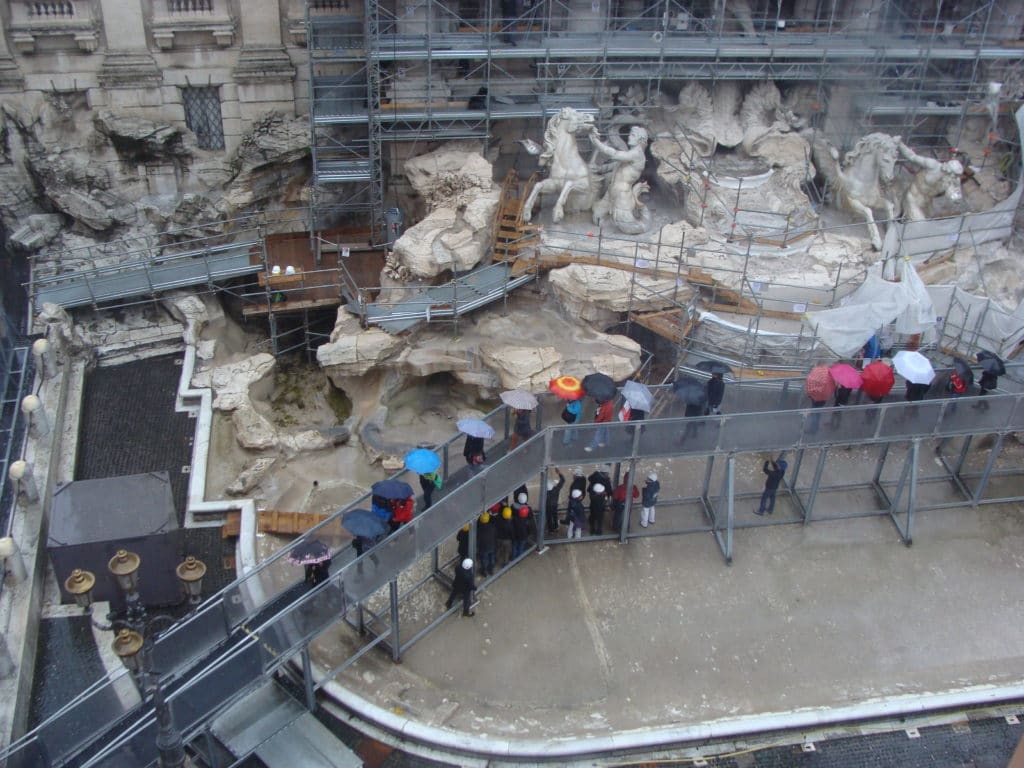
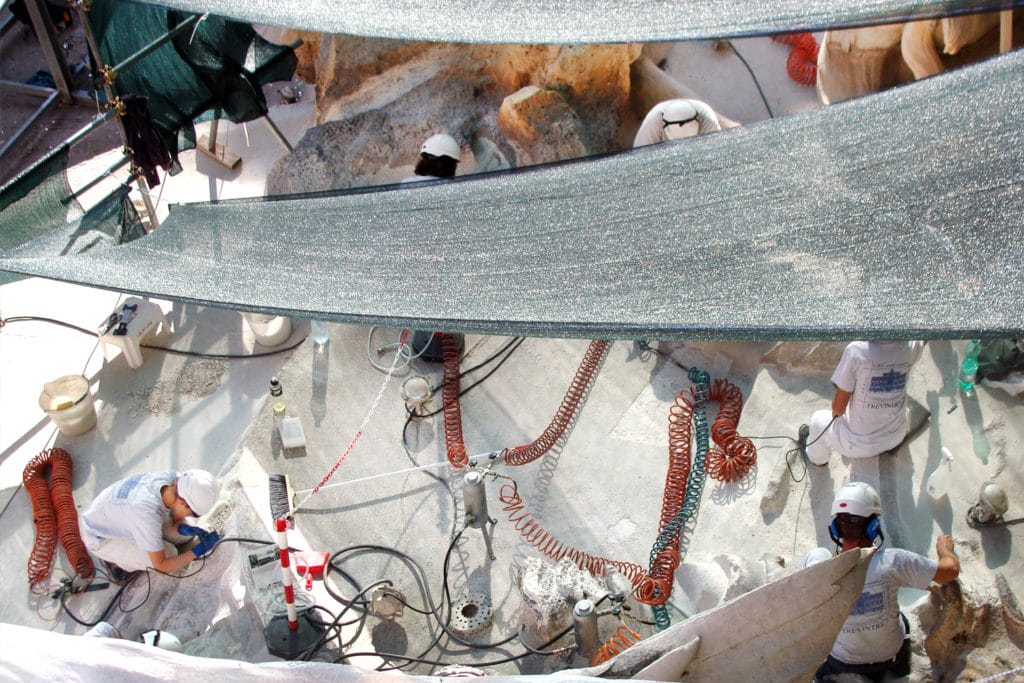
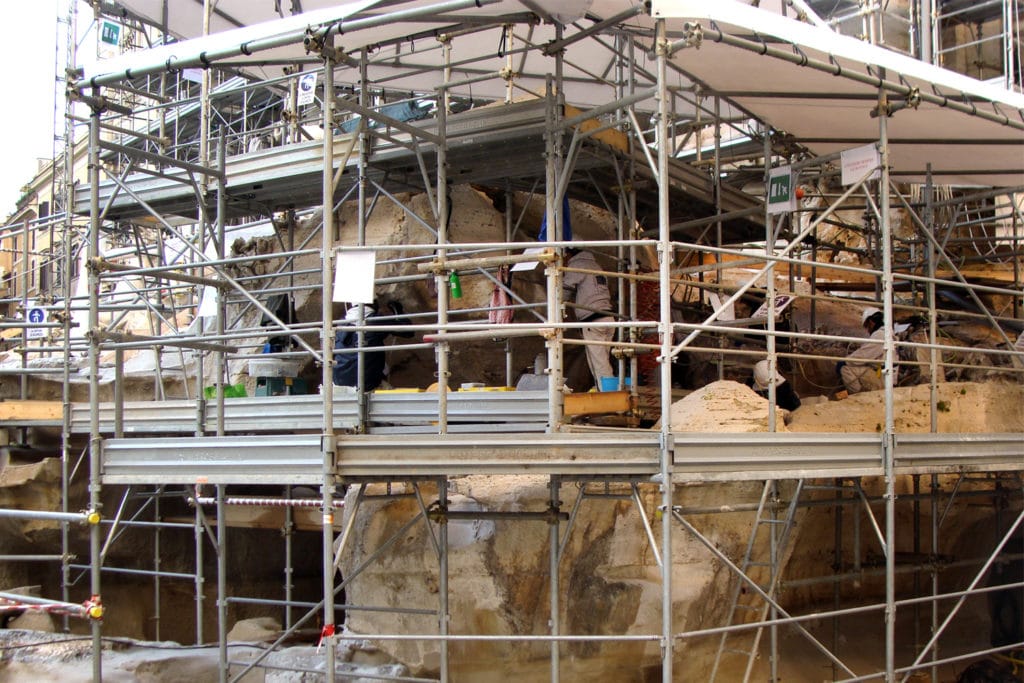
Ultrasound testing was carried out and compared with similar tests carried out in 1990. This showed that cracks in the wings of the horses in the two groups of Tritons had increased due to thermal expansion of the original iron supports.
This required a long and complex diagnostic study leading to a treatment involving the delicate removal of previous restoration materials, followed by the treatment and protection of the original iron.
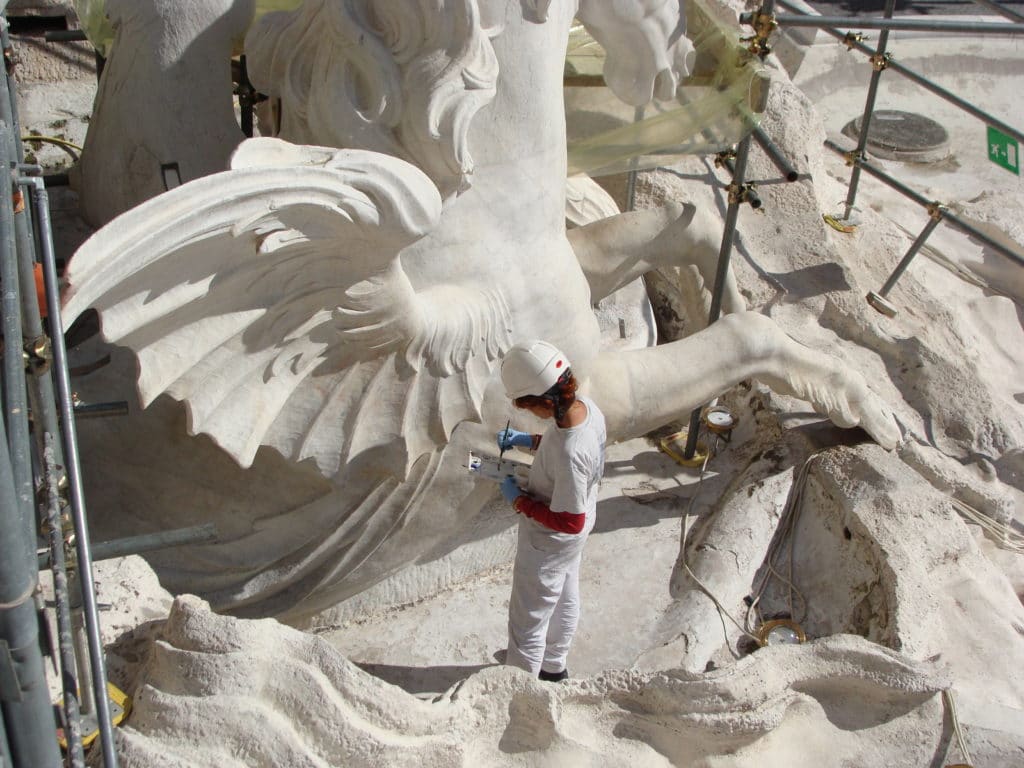
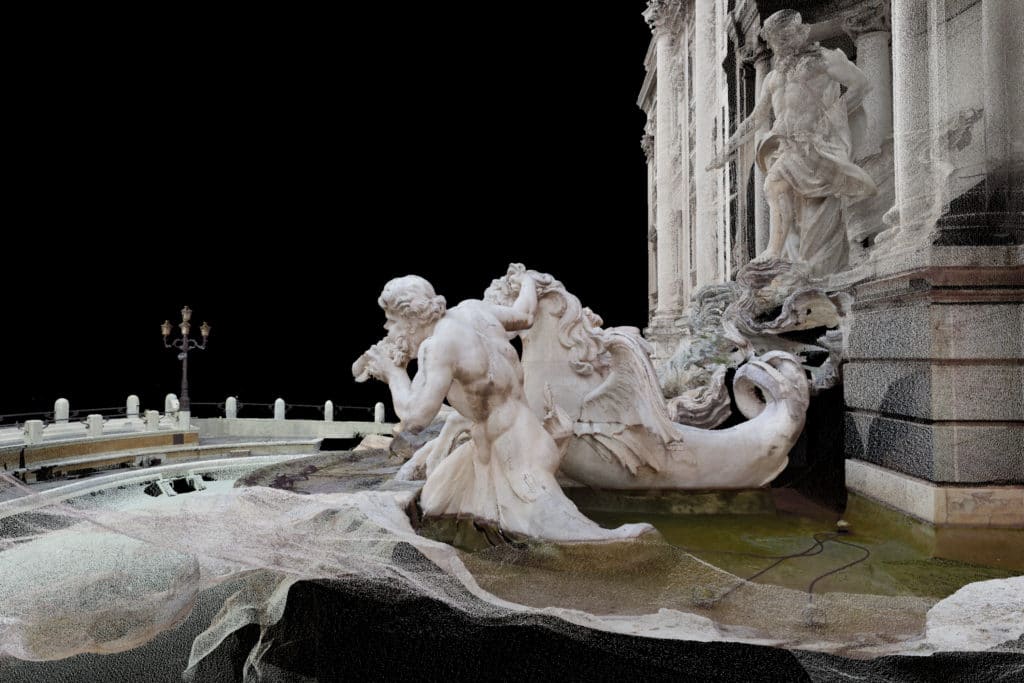 3D Reconstruction of the Triton on the Right
3D Reconstruction of the Triton on the Right
Our biggest task, as the head company, was without doubt the coordination of the various activities and maintaining the work program schedule: in 516 days of site-work, 26 conservators and 36 skilled workmen treated 4,340 square meters of surfaces; the technical team of the Director of works was made up of 31 technicians
and officials, who planned with us a series of additional operations, which were carried out with the help of 27 different professionals. The conclusion of the treatment was appropriately celebrated with a fashion show of Fendi’s latest collection, with the models parading on a walkway suspended over the water of the basin.
Ing. Silvio De Bellis
Soprintendenza Comunale di Roma: Arch. Francesco Giovanetti
Soprintendenza Comunale di Roma: Dott.ssa Anna Maria Cerioni
Arch. Andrea Borghi
Dott.ssa Marina De Santis
Fabrizio Nardis
Geom. Eugenio Di Ninno
FENDI Roma
R.T.I. TREVINTRE
CBC Conservazione Beni Culturali, Roma
A.R.A. s.n.c. di C. Camiz e F. Farachi; Tecnicon s.r.l.
C.A.R.P Group s.r.l
Opere Edili – Edilman s.r.l.
Domenico Ventura, Paola Conti, Maria Grazia Chilosi, Francesca Farachi
Laser scans: Pietro Gasparri CPT Studio srl; Graphic restitution and base-maps: Mirko Micozzi, Paola Carbonara; Graphic documentation: CBC – Maria Grazia Chilosi; ARA snc – Francesca Farachi; TECNICON srl – Paola Conti; Digitization of graphic maps: Mirko Micozzi
University of Calabria, Department of Biology, Ecology and Earth Sciences; RC Art Srl; Artelab Srl (Domenico Poggi); MOST srl (Mauro Tommasini); Metals analysis: Roberto Cesareo, Stefano Ridolfi
